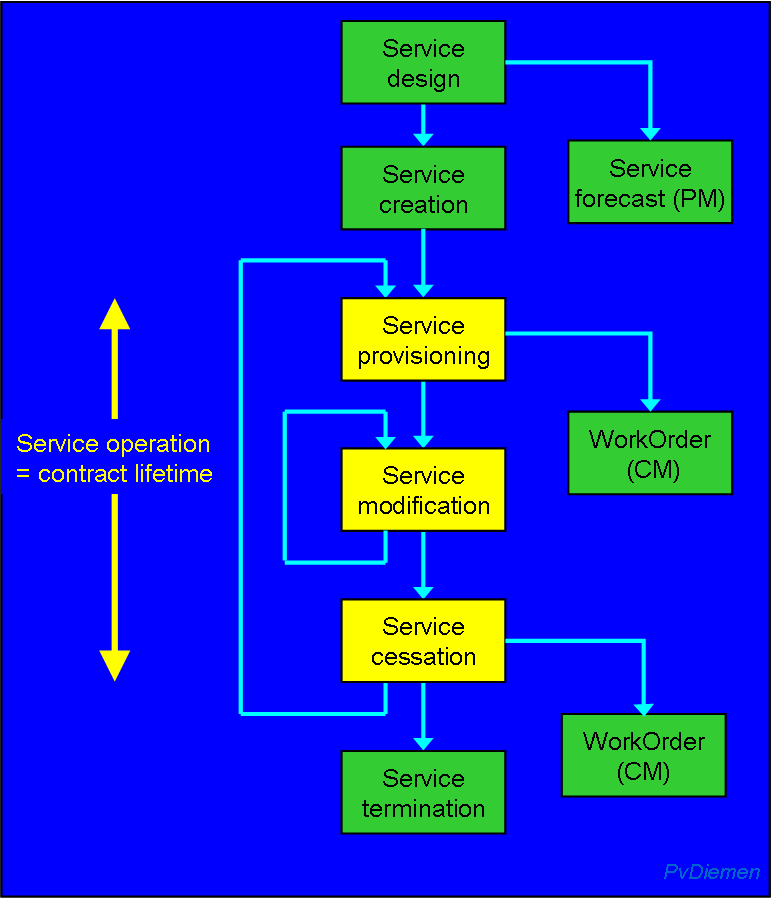 Service design (BML/SML)
Service design (BML/SML)- Define new service: characteristics, markets;
- Create Business Plan (target segment, tariff-levels, costs & revenues, ROI).
- Plan service implementation: consequences for operations (procedures), network and Network Management.
- Provide data for Service Forecasts in Capacity Management.
- Define options and tariffs
- Implement new service in the organisation.
- Market the service.
- Prepare contract: get (potential) customer data (addresses, credibility check) and service options (tariffs, QoS, billing), etc.
- Locate NEs involved (geographic mapping of topological address to physical equipment), potentially reserve/pre-allocate capacity.
- Agree contract (commit) → Service Order
- Define service details
- Create user service profiles
- Allocate resources
when they are static in the service to this customer. Note that there are various allocation schemes (see Capacity Management).- when suitable equipment is not available, this should result in Work Orders to Equipment provisioning (install/adapt equipment & cables); see Equipment life cycle.
- for service parts that cannot be provided by yourself, subcontract with other providers.
- Implement user service profiles (locked) in the network (NEL).
- Test service (end-to-end).
- Initiate service usage monitoring & billing.
- Commission: Unlock service profile & inform customer.
For a scheduled service, Unlocking occurs at the agreed time; for repetitive services Unlocking and re-Locking occur regularly; resources may remain allocated.
During this phase, one has to regularly:
- Collect usage data (AM & PM).
- Issue bills.
- Modify service (profile), potentially bill.
- Lock service profile (Administrative state = Locked).
- Wrap-up billing (force resource usage data) & contract.
- Resources: basically there are two options (trade-off):
- the service profile is locked precluding further use, but resources and potentially related equipment remain available (allocated/reserved). {It is not always possible to cease the service without changes to equipment (old equipment, e.g. straps).}
- resources are de-allocated (potentially re-used for another customer or equipment may be de-installed);
cancel external (subcontracted) service parts.
- Archive/delete service profile.
- Requires planning (analyse impact, migration of and information to remaining customers).